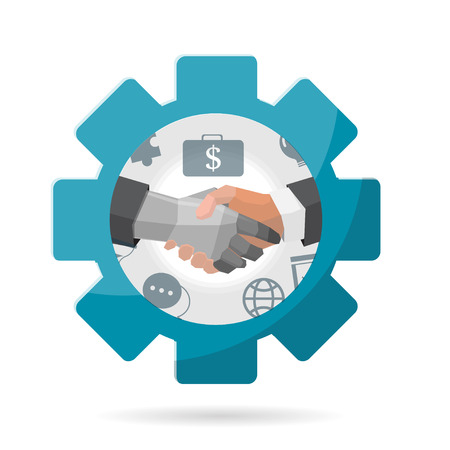1. Understanding Payment Fraud in the U.S. E-Commerce Market
E-commerce is booming in the United States, but with this growth comes an increased risk of payment fraud. Both new and established online businesses need to understand what types of fraud are out there and how they can affect merchants and customers alike.
Common Types of Payment Fraud in U.S. E-Commerce
| Fraud Type | Description | Impact |
|---|---|---|
| Card-Not-Present (CNP) Fraud | This happens when stolen credit card information is used to make online purchases, where the physical card isnt required. | Chargebacks for merchants, financial loss for consumers, damaged trust |
| Account Takeover (ATO) | Fraudsters gain access to a customer’s account and make unauthorized purchases or steal personal data. | Lost sales, brand reputation damage, customer frustration |
| Friendly Fraud | A legitimate customer makes a purchase, then disputes the charge with their bank after receiving the product or service. | Revenue loss, increased dispute processing costs for businesses |
| Phishing & Social Engineering | Scammers trick users into providing sensitive payment info through fake emails or websites. | Data breaches, identity theft, increased fraud risk for both parties |
| Refund Fraud | Fraudsters manipulate return policies to get money or products unlawfully. | Inventory shrinkage, higher operational costs, policy tightening |
The Impact on Merchants and Consumers
The effects of payment fraud go beyond just lost dollars. For merchants, every fraudulent transaction can lead to costly chargebacks, penalties from payment processors, and even suspension of gateway services if fraud rates get too high. For consumers, falling victim to payment fraud means losing money or having sensitive information exposed—this can erode trust in online shopping altogether.
Why U.S. E-Commerce Is a Major Target
The U.S. e-commerce market is one of the world’s largest and most active, making it an attractive target for cybercriminals. The use of credit cards as a primary payment method, combined with high transaction volumes and fast-moving digital sales environments, means there are plenty of opportunities for scammers to exploit gaps in security.
2. How Payment Gateways Combat Fraud
The Importance of Fraud Detection in US E-Commerce
Payment gateways play a critical role in protecting online businesses and their customers from fraudulent transactions. With the rise of e-commerce in the United States, cybercriminals are always looking for ways to exploit payment systems. That’s why payment gateways invest heavily in fraud protection technologies and processes, helping merchants stay one step ahead of scammers.
Technologies Used by Payment Gateways
Modern payment gateways use a combination of advanced technologies to spot and block suspicious activity. Here are some common tools and methods:
| Technology/Process | Description |
|---|---|
| Machine Learning Algorithms | Analyze transaction patterns in real time to detect unusual or risky behavior automatically. |
| Address Verification System (AVS) | Checks if the billing address provided matches the address on file with the card issuer. |
| Card Verification Value (CVV) Checks | Requires customers to enter the three- or four-digit code on their credit card, proving they have physical possession of the card. |
| Geolocation Tracking | Identifies if a transaction is being made from an unexpected or high-risk location. |
| Device Fingerprinting | Monitors the devices used for purchases to flag unfamiliar or suspicious devices. |
| Blacklist/Whitelist Management | Keeps records of known bad actors and trusted customers to speed up decision-making. |
| Velocity Checks | Limits the number of transactions allowed within a certain period to prevent rapid-fire fraud attempts. |
Fraud Prevention Processes in Action
The following steps outline how payment gateways typically manage fraud prevention:
- Transaction Screening: Every transaction passes through multiple automated checks, looking for red flags such as mismatched addresses or repeated failed attempts.
- Risk Scoring: Each transaction receives a risk score based on various factors like order size, location, and customer history.
- Manual Review: Transactions flagged as high-risk may be sent for manual review by security teams before approval or rejection.
- Real-Time Alerts: Merchants can receive instant notifications about suspicious activities, allowing them to act quickly.
- Customer Authentication: Extra verification steps, such as 3D Secure or two-factor authentication, may be triggered for high-risk transactions.
The Merchant’s Role in Fraud Protection
While payment gateways provide robust security features, US merchants should also follow best practices like using strong passwords, keeping software updated, and training staff to recognize scams. Working together with payment gateway providers helps create a safer shopping environment for everyone involved.

3. Key Features of Effective Fraud Protection
To keep e-commerce transactions safe, US payment gateways rely on advanced fraud protection tools and features. These solutions help merchants detect suspicious activity and stop fraud before it affects their business or customers. Below are the most important features you’ll find in effective fraud prevention systems.
Machine Learning and Artificial Intelligence
Modern payment gateways use machine learning (ML) and artificial intelligence (AI) to analyze thousands of transactions in real time. These systems learn from past data to recognize patterns that indicate fraud, such as unusual spending behavior or inconsistent locations. By constantly updating their algorithms, ML-powered tools can spot new types of fraud faster than traditional methods.
Benefits of Machine Learning:
- Real-time detection: Instantly flags suspicious transactions before they’re completed.
- Continuous improvement: Algorithms get smarter with every transaction analyzed.
- Reduced false positives: More accurate results mean fewer legitimate purchases are blocked.
Address Verification Service (AVS)
AVS checks the billing address provided by the customer against the one on file with their credit card company. If there’s a mismatch, the gateway can flag or decline the transaction. This helps prevent stolen cards from being used successfully online.
Card Verification Value (CVV) Checks
The CVV is a three- or four-digit code found on credit cards. Requiring this code makes it harder for someone to use stolen card numbers alone. Payment gateways automatically verify this number during checkout to add an extra layer of security.
Geolocation and Device Fingerprinting
These technologies track where a transaction is coming from and what device is being used. If a purchase suddenly comes from a different country or an unknown device, it raises a red flag for potential fraud. Merchants can then review or block these transactions as needed.
Main Tools Compared
| Feature | How It Works | Main Benefit |
|---|---|---|
| Machine Learning & AI | Analyzes transaction patterns in real time | Detects new and evolving threats quickly |
| Address Verification Service (AVS) | Matches billing info with card issuer records | Blocks unauthorized card use |
| CVV Checks | Requires card security code at checkout | Adds extra step to stop stolen numbers |
| Geolocation & Device Fingerprinting | Identifies user’s location and device type | Catches suspicious logins and purchases |
Velocity Checks and Risk Scoring
This tool monitors how often transactions come from the same card or IP address in a short period. Too many attempts may suggest fraud, so payment gateways can block those transactions automatically. Risk scoring assigns each transaction a risk level based on multiple factors, helping merchants decide when to allow, review, or deny a purchase.
The Bottom Line on Fraud Protection Features
The best US payment gateways combine several of these tools to create strong, layered security for both businesses and shoppers. By using machine learning, AVS, CVV checks, geolocation, velocity checks, and risk scoring together, merchants can significantly reduce their risk of fraud while keeping checkout smooth for real customers.
4. Best Practices for E-Commerce Security
Strengthening Your Payment Gateway Against Fraud
Running an online store in the U.S. means you need to be extra careful with your customers’ payment information. Fraud is a real threat, but there are proven strategies you can use to boost your e-commerce security and protect both your business and your shoppers.
Actionable Strategies for U.S. Merchants
1. Stay PCI Compliant
The Payment Card Industry Data Security Standard (PCI DSS) sets rules for handling credit card data securely. All U.S. merchants accepting card payments online must follow these standards. Regularly review your compliance, complete self-assessment questionnaires, and ensure your systems are up-to-date.
2. Implement Multi-Factor Authentication (MFA)
MFA requires users to provide two or more verification factors to access their accounts or complete transactions. This could mean a password plus a one-time code sent to their phone. Adding MFA makes it much harder for fraudsters to break in, even if they have a password.
3. Use Advanced Fraud Detection Tools
Many U.S. payment gateways offer built-in fraud screening tools that analyze each transaction for suspicious activity. Turn on features like address verification (AVS), CVV checks, and device fingerprinting to catch risky transactions before they happen.
4. Monitor Transactions in Real Time
Set up alerts for unusual purchase amounts, rapid order frequency, or mismatched shipping details. Monitoring orders as they come in helps you stop fraudulent purchases quickly.
5. Educate Your Team and Customers
Train your employees to spot signs of fraud and create resources that help customers recognize phishing scams or fake websites.
E-Commerce Security Best Practices Table
| Best Practice | Description | Benefit |
|---|---|---|
| PCI Compliance | Follow industry standards for card data security | Avoid fines & increase trust |
| Multi-Factor Authentication (MFA) | Add extra login/checkout verification steps | Dramatically reduces unauthorized access |
| Fraud Detection Tools | Enable AVS, CVV checks, risk scoring | Catches suspicious transactions early |
| Real-Time Monitoring | Watch for unusual patterns as they happen | Stops fraud before it escalates |
| Team & Customer Education | Teach how to recognize fraud attempts | Lowers risk of human error or trickery |
The Takeaway: Layered Security Works Best
No single tool will stop all fraud attempts, but combining these best practices can greatly reduce your risk. Review your payment gateway’s security features regularly and stay updated on new threats so your e-commerce business remains safe and trustworthy for U.S. shoppers.
5. Balancing Security with Customer Experience
One of the biggest challenges for US e-commerce businesses is finding the right balance between strong fraud protection and a smooth customer experience. If security measures are too strict, legitimate customers might get frustrated and abandon their carts. On the other hand, weak fraud controls can open the door to costly chargebacks and data breaches. So, how can online stores keep transactions secure while making sure customers enjoy a seamless checkout?
Understanding Common Pain Points
Customers expect fast, hassle-free payments. When they encounter extra verification steps or have their orders declined by mistake, it creates friction. The key is to apply fraud checks that work in the background and only prompt extra steps when absolutely necessary.
Fraud Protection Methods and Their Impact on User Experience
| Fraud Protection Method | Security Level | User Experience Impact |
|---|---|---|
| AVS (Address Verification System) | Medium | Low friction; typically invisible to users |
| CVC/CVV Checks | Medium-High | Minimal impact; quick entry required |
| Multi-Factor Authentication (MFA) | High | Moderate friction; extra step for users |
| Behavioral Analytics (AI-based) | High | No visible impact; works behind the scenes |
| Manual Order Review | Very High | Can delay order processing; high friction if overused |
Best Practices for Seamless Security in US Payment Gateways
- Leverage AI and Machine Learning: Modern payment gateways use advanced algorithms to detect suspicious activity without bothering most shoppers. This keeps checkout fast for regular customers.
- Use Risk-Based Authentication: Only ask for additional verification when a transaction looks unusual. For example, if a user logs in from a new device or location, then prompt for extra proof.
- Simplify Verification Steps: If extra authentication is needed, make it as easy as possible—like sending a quick text code rather than requiring long forms.
- Provide Clear Communication: If an action is required, let your customers know why in simple terms so they feel protected, not inconvenienced.
- Monitor and Adjust Rules Regularly: Analyze false positives and customer complaints to fine-tune your fraud rules and keep the experience smooth.
The Customer-Friendly Fraud Prevention Formula
The best US payment gateways strike a balance using layered security: most checks are invisible, but extra steps only appear when theres real risk. By focusing on both sides—protection and convenience—you can build trust and boost sales without letting fraud slip through.


